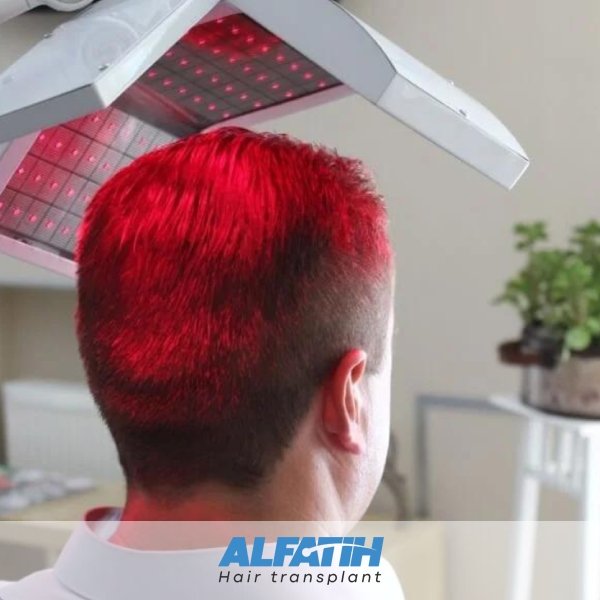In the treatment session, the patient wears an innovative and advanced helmet, equipped with high technologies, as it works to distribute weak or low waves of the laser on the entire scalp to cover all areas of the hair, and thus the rays penetrate the scalp without causing any burns in it, giving the cells all the vitamins and hyaluronic acid necessary to stimulate the growth of Hair, blood flow and prevent hair aging as well, and this type of treatment raises and activates the scalp temperatures through the light points on it.
It is a method that does not cause any discomfort or pain, and doctors confirm that the results of this type of carbon laser treatment are wonderful and achieve satisfactory results.
We at Al-Fateh Hospital do not focus only on hair transplantation. After conducting the tests, the doctor determines whether the patient needs transplantation or treatment. Many other places focus on transplantation only in order to earn more profit. We focus on the human side of this profession.
Cold laser hair treatment, also known as low-level laser therapy (LLLT) or red light therapy, is a non-invasive procedure aimed at stimulating hair growth and improving hair density. It involves the use of low-level laser light or LED (light-emitting diode) devices to irradiate photons into the scalp tissues. Here’s how cold laser hair treatment works and its potential benefits:
How it Works:
- Stimulation of Hair Follicles: The low-level laser light penetrates the scalp and is absorbed by the hair follicles. This stimulates cellular activity within the follicles, promoting hair growth and increasing blood flow to the scalp.
- Reduction of Inflammation: Cold laser therapy can help reduce scalp inflammation, which is often associated with conditions like alopecia.
- Prolonging Hair Growth Cycle: It may prolong the growth phase of the hair cycle (anagen phase), leading to thicker and healthier hair.
Benefits:
- Hair Regrowth: Cold laser therapy has shown promising results in promoting hair regrowth, especially in individuals with mild to moderate hair loss or thinning.
- Non-Invasive: Unlike surgical hair restoration procedures, cold laser therapy is non-invasive and does not require any incisions or downtime.
- No Side Effects: It is generally considered safe with minimal to no side effects reported. However, some individuals may experience mild scalp irritation or itching.
- Convenience: Cold laser therapy can be performed in a clinical setting or even at home with handheld devices, offering convenience to individuals seeking hair restoration treatments.
Procedure:
- Consultation: A consultation with a healthcare provider or a hair specialist is typically the first step to determine if cold laser therapy is suitable for the individual’s condition.
- Treatment Sessions: A series of treatment sessions are usually recommended, typically performed multiple times per week for several weeks.
- Device Application: During the treatment session, the cold laser device is placed directly on the scalp, and the low-level laser light or LED is directed to the targeted areas.
- Duration: Each treatment session may last from a few minutes to half an hour, depending on the device and the treatment protocol.
Considerations:
- Effectiveness: While cold laser therapy has shown effectiveness in promoting hair growth, individual results may vary, and it may not work for everyone.
- Maintenance: To maintain results, ongoing treatment sessions may be necessary, as discontinuing treatment can lead to a reversal of benefits.
- Combination Therapy: Cold laser therapy can be used in combination with other hair loss treatments, such as topical medications or oral supplements, for enhanced results.
Conclusion:
Cold laser hair treatment is a non-invasive option for individuals experiencing hair loss or thinning. While it may not be a standalone solution for severe hair loss, it can be a valuable part of a comprehensive hair restoration regimen. Consulting with a healthcare provider or a hair specialist can help determine if cold laser therapy is appropriate and to develop a personalized treatment plan.



